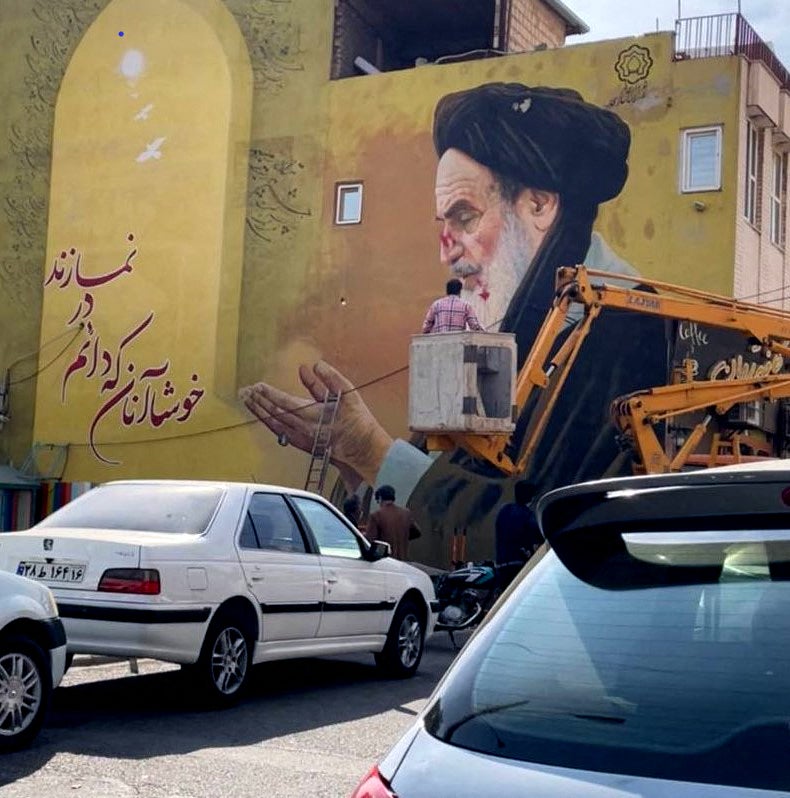
Iran’s sparsely populated southeast erupted in protests and violence on Friday, with tens injured and killed at the hands of security forces in multiple cities, according to human rights monitors.
Protesters emerged from prayers to gunfire in the cities of the largely ethnic Baluch region along the country’s southeast border with Pakistan and Afghanistan, a long restive region. One human rights activist told The Independent that some 30 people were injured or shot dead in the city of Khash, a sleepy desert town of 60,000.
There were also outbreaks of political violence in Zahedan, the provincial capital, Iranshahr, Rask and Saravan as the Revolutionary Guard and other regime armed forces opened fire on the protesters.
“There were very large protests, many people came out,” Shir-Ahmad Shirani, editor of Haalvash, a Baluch rights advocacy group and website, said in an interview. “The security forces started firing on the people from the rooftops.”

Videos posted online showed protesters blocking roads with rocks and fires. In Zahedan, young protesters could be seen ducking for cover as regime forces opened fire. “Death to the dictator!” they call out.
Another clip showed a lifeless young man reportedly struck by gunfire in Khash and covered in blood. “Allahu akbar!” someone calls out in grief.
Another clip showed an entire commercial district of Khash on fire, allegedly at the hands of security forces. Hospitals warned of shortages of blood for treating the wounded. Many of the injured and dead were under 18 years old, Mr Shirani said.
Iran has been riven by seven weeks of protests sparked by the death in custody of Mahsa Amini, a 22-year-old who had been abducted by the morality police. Daily protests have led to at least 300 dead and at least 37 slain members of the security forces, according to Hrana, an Oslo-based rights group.
On Friday, the G7 group of wealthy western nations issued a statement of support for the Iranian protesters. “We condemn the violent death of the young Iranian woman ‘Jina’ Mahsa Amini after her arrest by Iran’s so-called ‘morality police,’” said the statement. “We further condemn the brutal and disproportionate use of force against peaceful protesters and children.”
Many of those killed in the protests have been in Iran’s eastern and western border regions which are largely settled by ethnic and religious minorities.
Iranians are overwhelmingly members of the Shia sect of Islam while minority ethnic Baluchis are Sunni Muslims. But few religious tensions have emerged in the weeks of protests as Iranians from across ethnic, regional, religious and gender divides have come together against the Tehran regime.
Friday’s violence came a day after the assassination of Sajjad Shahraki, a Shia cleric loyal to Iran’s Supreme Leader Ali Khamenei, in the ethnic Baluch city of Zahedan. It also came on the day that the top Sunni cleric in Zahedan, Molavi Abdolhamid, called in his prayer sermon for an internationally monitored referendum in the country, garnering cheers from worshippers.
The protests also coincided with the anniversary of the 1980 takeover of the United States embassy compound in Tehran by Iranian Islamic radicals, an event celebrated in Iran with pro-government rallies. State television showed thousands of regime supporters on the streets of various cities, burning American flags and effigies of New York-based Iranian women’s rights activist Masih Alinejad.
Iranian officials have accused the US of being behind the attacks. “You want to create discord among ethnicities and pit people against people and create civil war,” Friday prayer leader Kazem Seddiqi told worshippers on Friday.
During a fundraising appearance in California on Thursday, the US president Joe Biden spotted a “Free Iran” sign in the crowd and responded, “Don’t worry. We’re gonna free Iran. They’re gonna free themselves pretty soon.”







